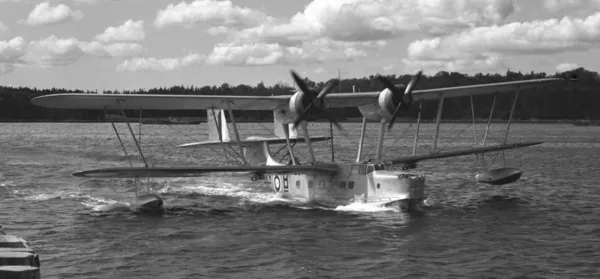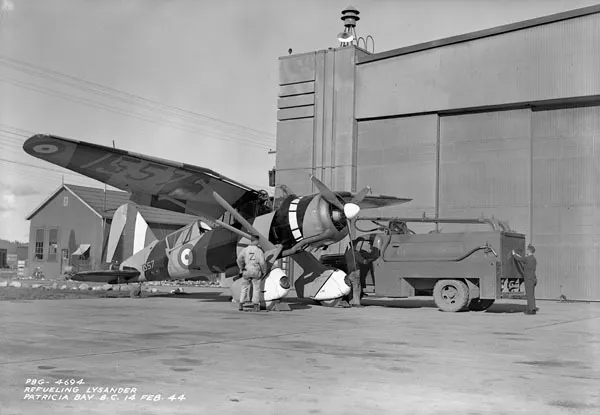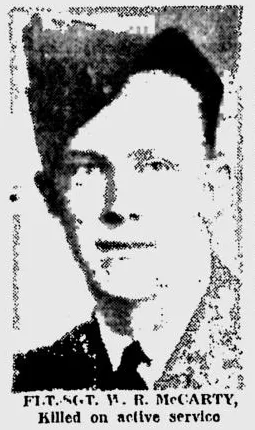Bell, John Mcclelland
Killed in Flying Accident 1943-07-18


Birth Date: 1917-February-02
Born:
Son of William and Kathleen Bell. of Vancouver.
Home: Vancouver, British Columbia
Enlistment:
Enlistment Date: Unknown
Service
RCAF
Unit
3 OTU- Operational Training Unit
Base
RCAF Stn. Patricia Bay, British Columbia
Rank
Leading Aircraftman
Position
Leading Aircraftman
Service Numbers
R/162924
First Burial
 Cranberry Cemetery, Powell River, British Columbia
Cranberry Cemetery, Powell River, British Columbia
Stranraer 916
Supermarine Stranraer

Canadian Vickers Stranraer, RCAF (Serial No. 913), CV190, coded QN-B, No. 5 (Bomber Reconnaissance) Squadron, RCAF Station Dartmouth, Nova Scotia, sometime between 1938 and 1941.
The Supermarine Stranraer was a flying boat designed and built by the British Supermarine Aviation Works company. It was developed during the 1930s on behalf of its principal operator, the Royal Air Force (RAF).Derived from the Supermarine Scapa, the aircraft's design was heavily shaped by Specification R.24/31. While initially rejected by the Air Ministry, Supermarine persisted with development as a private venture under the designation Southampton V. During 1933, a contract was placed for a single prototype; it was around this time that the type received the name Stranraer. First flown on 24 July 1934, the Stranraer entered frontline service with the RAF during 1937; most examples of the type were in service by the outbreak of the Second World War.
The Stranraer's typically undertook anti-submarine and convoy escort patrols during the early years of the conflict. During March 1941, it was withdrawn from frontline service, but continued to be operated in a training capacity up until October 1942. In addition to the British-built aeroplanes, the Canadian Vickers company in Montreal, Quebec, also manufactured 40 Stranraers under licence for the Royal Canadian Air Force (RCAF). These Canadian Stranraers served in anti-submarine and coastal defence capacities on both Canada's Atlantic and Pacific coasts, and were in regular service until 1946. Following their withdrawal from military service, many ex-RCAF Stranraers were sold off to fledgeling regional airlines, with whom they served in various commercial passenger and freighter operations into the 1950s.
The Royal Canadian Air Force (RCAF) Stranraers were exact equivalents of their RAF counterparts. In Canadian service, they were usually employed in coastal patrol against submarine threats in a similar role to the British Stranraers. The Canadian Vickers-built Stranraers served with the RCAF throughout the war, the last example being withdrawn on 20 January 1946.Wikipedia
 Wikipedia Supermarine Stanraer
Wikipedia Supermarine Stanraer
3 OTU (3 Operational Training Unit)
The Operational Training Unit (OTU) was the last stop for aircrew trainees. They spent 8 to 14 weeks learning to fly operational aircraft (Hawker Hurricane or Fairey Swordfish, e.g.). The instructors had experience in actual operations, and often were posted to OTUs after their operational tour.
 Canadian Virtual War Memorial
Canadian Virtual War Memorial Commonwealth War Graves Commission
Commonwealth War Graves Commission www.findagrave.com
www.findagrave.com

 Harold A Skaarup Web Page
Harold A Skaarup Web Page RCAF.info - RCAF Station Patricia Bay B.C.
RCAF.info - RCAF Station Patricia Bay B.C. YouTube - Valour Canada Aerodrome of Democracy
YouTube - Valour Canada Aerodrome of Democracy